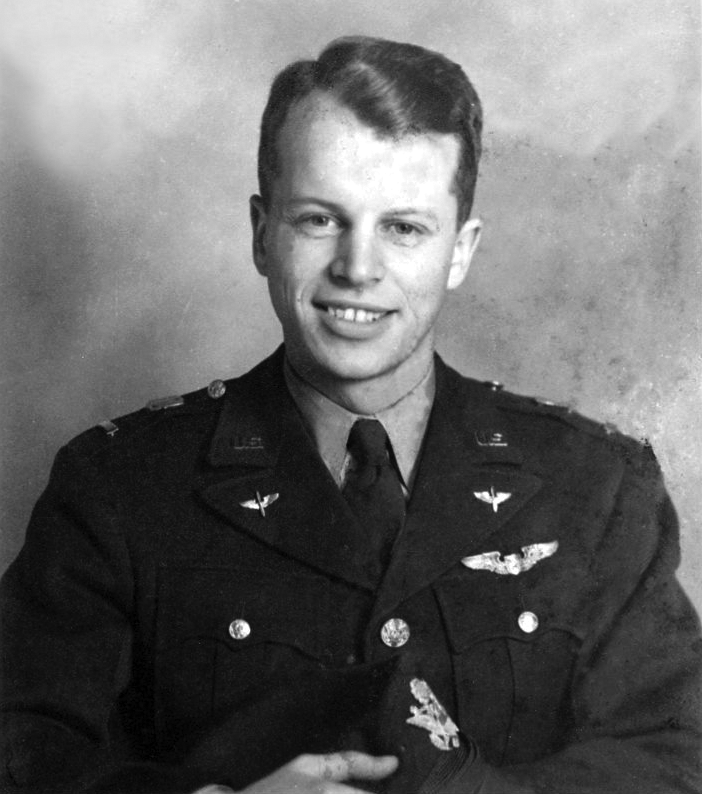
21 April 1944: The first military helicopter combat rescue began with Lieutenant Carter Harman, 1st Air Commando Group, being ordered to proceed from Lalaghat, India with his Vought-Sikorsky YR-4B, 43-28247, 600 miles (965 kilometers) to Taro in northern Burma.
Technical Sergeant Ed “Murphy” Hladovcak, pilot of a Stinson L-1A Vigilant liaison airplane, had crashed in the jungle behind Japanese lines while transporting three wounded British soldiers. Lieutenant Harman was assigned to attempt to rescue the four men. It would be a marathon operation.
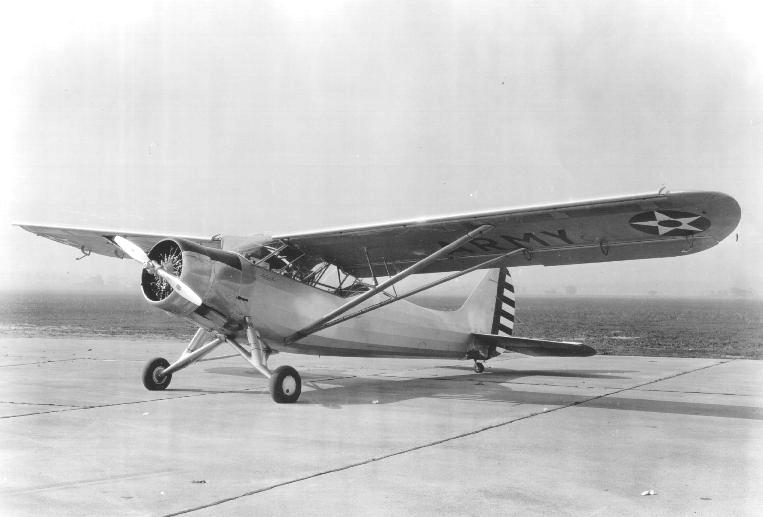
It took Harman and his Sikorsky 24 hours to arrive at Taro. After a brief rest and dip in the river to cool off, he continued for another 125 miles (202 kilometers) to an airstrip in the jungle called “Aberdeen” which was well behind the enemy lines. It was from here that Sgt. Hladovcak had been operating, flying out wounded soldiers. From Aberdeen, Harman was led to the location of the downed men by another liaison airplane. The survivors were surrounded by Japanese soldiers who had found the crashed airplane and were trying to locate the four men.
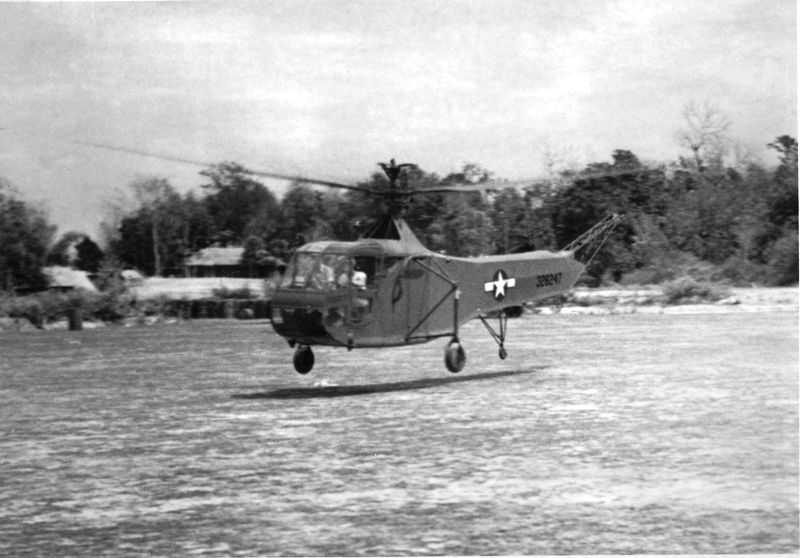
Because of the high heat, elevation and humidity, which increased the density altitude, the YR-4B’s air-cooled engine was unable to produce its full rated power. Also, the helicopter’s rotor blades were not as effective as they would have beeen at lower density altitudes.
Harman planned to lift one of the survivors out of the clearing in the jungle and fly a short distance to a sand bank where other L-1 or L-5 liaison airplanes could pick them up and fly them back to Aberdeen. He would repeat the operation until all four men had been rescued. However, it took the rest of the day to airlift just the first two wounded and very sick soldiers.
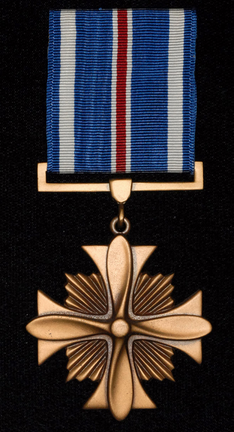
On the second flight, the helicopter’s engine was overheating and on landing it seized and could not be restarted. Sergeant Hladovcak and the remaining soldier were still in the jungle, Lieutenant Harman was stuck by the river bank and Japanese soldiers were everywhere.
On the morning of 25 April Lieutenant Harman was able to get the helicopter’s engine to start, and again, one at a time, he rescued the two remaining survivors. A liaison plane flew out the wounded soldier while Hladovcak rode along with Harman back to Aberdeen. He had never seen a helicopter before.
For his actions, Lieutenant Carter Harman was awarded the Distinguished Flying Cross.
Sikorsky YR-4B 43-28247 was condemned 31 December 1944.
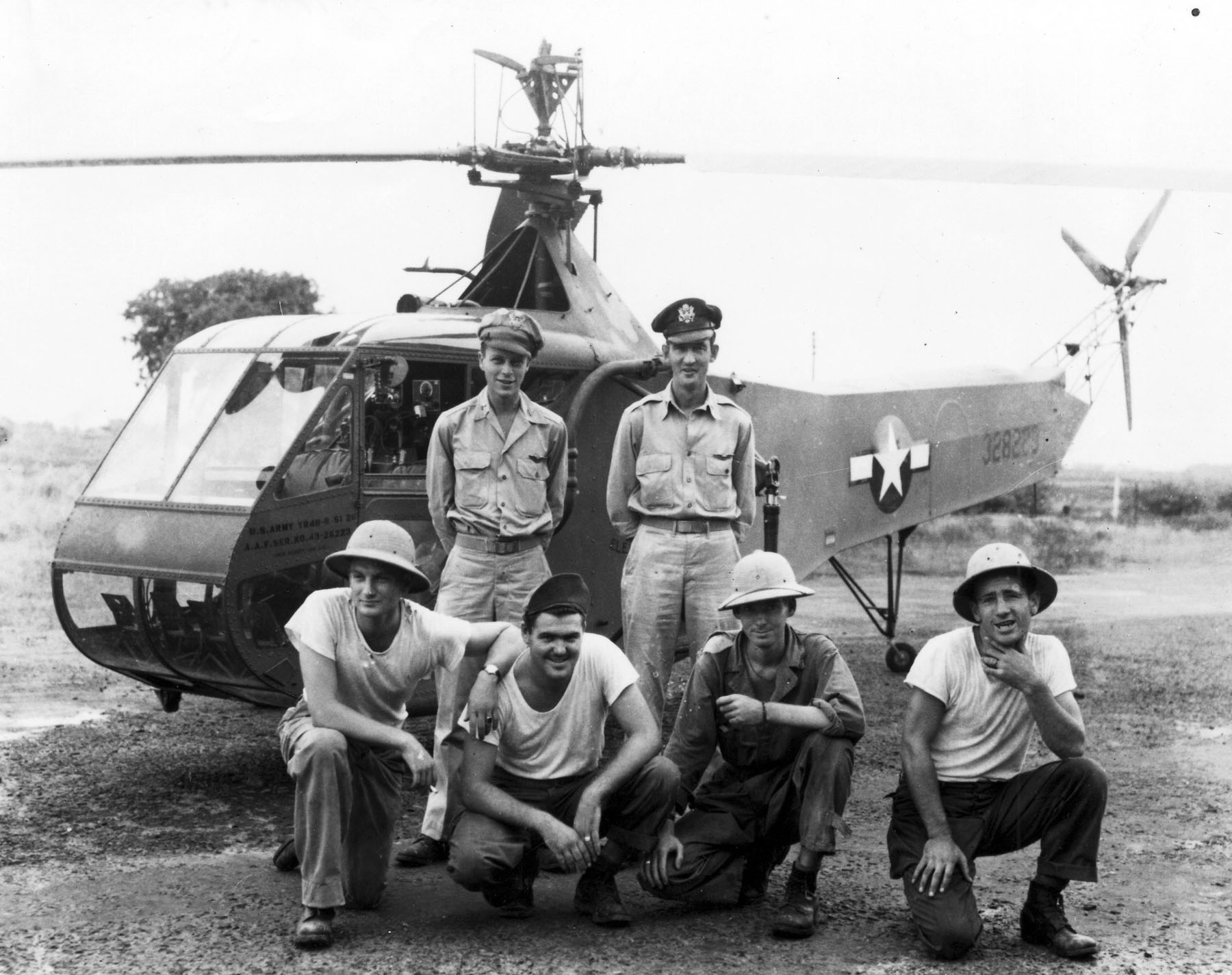

The main rotor consisted of three tapered, fully-articulated blades built of chrome-molybdenum steel spars and spruce plywood ribs, with laminated spruce, balsa and mahogany forming the leading edge and a flexible cable forming the trailing edge. The blades were covered with two layers of doped fabric. The three-bladed semi-articulated tail rotor was built with a spruce spar and alternating laminations of maple and mahogany, covered with fabric. Both the main and tail rotors had a thin brass abrasion strip covering the leading edges. The main rotor turned counter-clockwise, as seen from above. (The advancing blade is on the helicopter’s right.) The tail rotor was mounted on the helicopter’s right side in a tractor configuration. It turned clockwise as seen from the helicopter’s left. (The advancing blade is below the axis of rotation.)
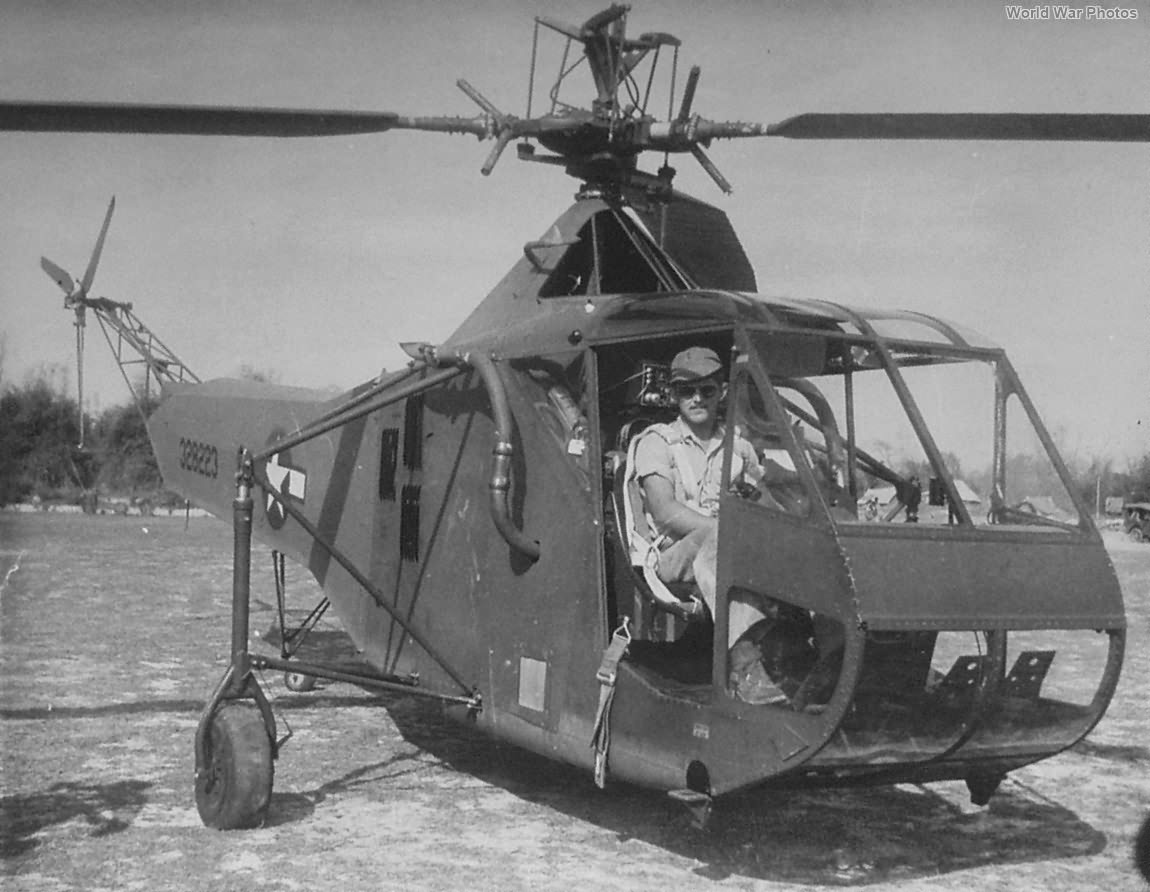
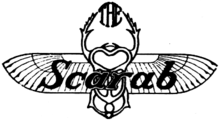
The R-4B had a cruise speed of 65 miles per hour (105 kilometers per hour) and maximum speed of 82 miles per hour (132 kilometers per hour). The service ceiling was 12,000 feet (3,658 meters) and range was 157 miles (253 kilometers).
The YR-4B was equipped with bomb racks. It could carry three 125 pound (56.7 kilogram) demolition bombs or one 325 pound (147 kilogram) depth bomb. The equipment was deleted for the R-4B.
Sikorsky built 27 YR-4Bs and 100 R-4B helicopters. Of these, 40 were assigned to the Army Air Corps, 19 to the Navy and Coast Guard, and 41 were sent to the Royal Air Force and Royal Navy.
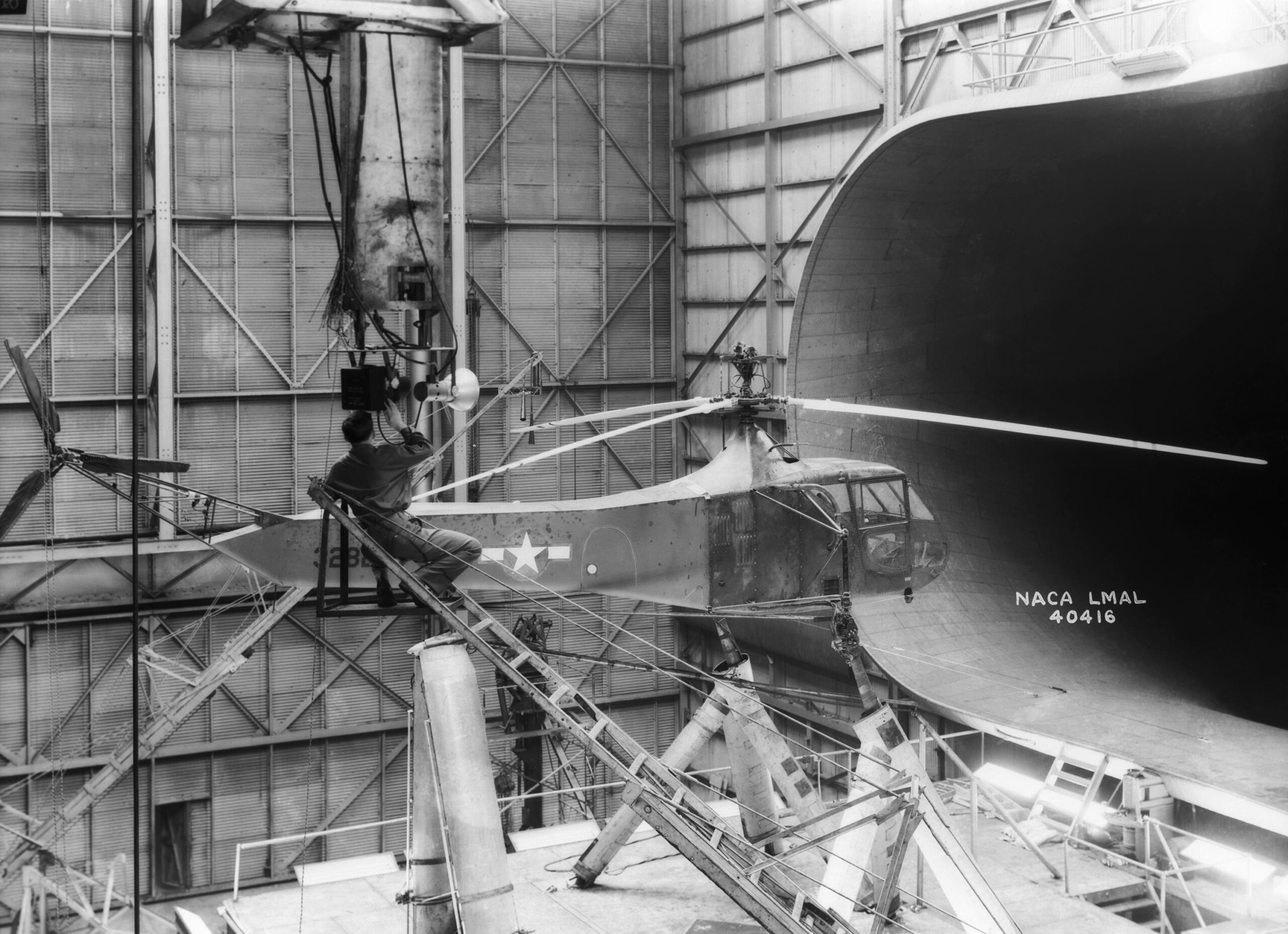
Carter Harman was born at Brooklyn, New York, 14 June 1918, the son of Steven Palmer Harman, a newspaper editor, and Helen F. Doremus Harman.
Before the war, Harman had been a musician and author. He assisted Duke Ellington write an autobiography. Harman earned a bachelor’s degree in music composition from Princeton University, Princeton, New Jersey, in 1940. While at Princeton, Harman was a member of the Dial Lodge, American Whig Society, Princeton University Band, and the Princeton University Choir.
Harman enlisted as a private in the United States Army at Hew York City on 1 April 1942, and was assigned to the Air Corps. Enlistment records indicate that he was 5 feet, 7 inches (170.2 centimeters) tall and weighed 125 pounds (57 kilograms).
After World War II ended, Harman returned to his musical studies at Columbia University, New York City, receiving a master’s degree in 1949.
Harman worked as a music critic for The New York Times and Time Magazine, and also continued writing books, as well as composing for ballet and opera. He was also a music producer and became executive vice president of CRI Records (Composers Recordings, Inc.).
Harman was married three times. He married Miss Nancy Hallinan, 5 February 1946, however they later divorced. His second wife was Helen Scott. They had four children together. His third wife was Wanda Maximilien.
Carter Harman died at Berlin, Vermont, 23 January 2007 at the age of 88 years.
© 2018, Bryan R. Swopes
Amazing work, Bryan. Thanks for sharing!
Thank you very much, John. 🙂
As the former PR Manager for Sikorsky Aircraft and a Trustee of the Sikorsky Archives, I did my bit to mention Carter Harman’s achievement. You did a fine job in telling the story. Much appreciated!
Thank you very much! 🙂
Are there any details available as to why “Sikorsky YR-4B 43-28247 was condemned 31 December 1944.” ? I must add to my expansive library of useless information. 🙂
I don’t know, but a aircraft with wood components in a tropical environment may be difficult to keep in flightworthy condition.
I was wondering the same thing.